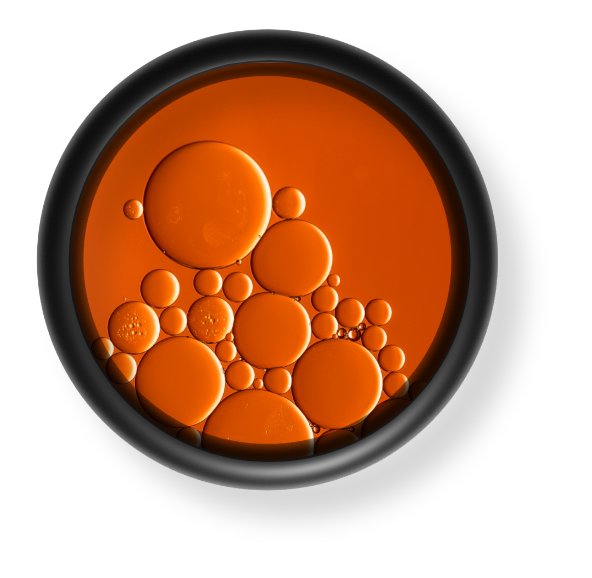Menu
Close Menu

Updated: November 2023
FKM (Viton™) and Nitrile (NBR) are two of the most used elastomers for sealing applications. These materials are suited for all-purpose general use applications. They both offer key properties that allow for great flexibility for different tasks throughout the industry. They both offer excellent compression set resistance, great oil and petroleum resistance, and both can work in temperatures between 0-230ºF, which makes both excellent choices for general industrial use.
Because of the wide range of other materials available, selecting the best O-ring for your application can be a daunting task. It is important to understand the key differences hidden behind the similarities of these materials to avoid premature breaking.
Fluoroelastomer rubber (Viton) performs well in many different environments such as a variety of oil and petroleum products, high vacuum situations, ozone, weather, high temperatures, and strong acids. This material is commonly used to seal leaks, valves, or pumps within the aircraft or automotive industries but can extend well beyond that.
FKM has an outstanding resistance to heat, reaching sustained temperatures of 400ºF or even higher for shorter periods of time. Since most compounds can fail in extreme high temperature environments, FKM is an excellent choice.
Temperature Range: -15ºF up to 400ºF
Fluoroelastomer is known to have excellent chemical resistance, making it the standard for o-ring materials. Typically, when rubber is introduced to harsh chemicals it can deform and swell up causing damage to the seal and potentially the machine or equipment. FKM offers superior chemical and swell resistance within high octane and oxygenated fuel blends.
Fluoroelastomer (FKM / Viton™) Pros
Fluoroelastomer (FKM / Viton™) Cons
Nitrile (Buna / NBR) is a synthetic rubber, composed of acrylonitrile (ANC) and butadiene. Depending on the ratio of ANC and butadiene, the working properties may vary. A lower ANC would be able to withstand a colder temperature before transitioning into a brittle state. This rubber elastomer is used in a variety of industries such as automotive, oil and gas, military, and more.
Buna-N O-rings, gaskets, and other sealing devices offer a large number of beneficial properties such as oil and gas products, superior compression set (ability to be squeezed and maintain its shape and sealing ability), and abrasion resistance (ability to withstand wear and tear of friction caused by moving parts).
Temperature Range: -40ºF up to 250ºF
Nitrile (NBR / Buna-N) Pros:
Nitrile (NBR / Buna-N) Cons:
Nitrile and FKM have many similarities which allow them to be suited for an extensive list of general use applications and serve as excellent seals in many industries. Both have great resistance to certain chemicals, oils, and petroleum.
FKM / Viton® offers excellent resistance to ozone, oxidation, and UV light while Nitrile performs poorly in those environments. Although Nitrile / Buna-N supports many of the same chemical resistances as FKM, it has a much lower list of compatible chemicals.
Nitrile offers better resistance to tearing and abrasion which allows it to be more suited for heavy industrial application with moving mechanical parts. Its lower compression set allows Nitrile to be compressed tighter without losing sealability or breaking.
| Nitrile (NBR / Buna-N) | Fluoroelastomer (FKM / Viton®) | |
| Temperature Range | -40ºF up to 250ºF | -15ºF up to 400ºF |
| Pros | Great for sealing petroleum oils, water, and hydraulic fluids. Great tear and abrasion resistance. | Diverse sealing applications. Great for sealing petroleum, silicone-based fluid and gases, acids, halogenated hydrocarbons, and more. |
| Cons | Can be used in hydraulic systems, oil and gas industries, water systems, automotive, military, and general use applications. | Can be used in chemical processing, automotive, aerospace, oil, and gas industries. |
Are you looking for an ISO 9001 certified manufacturer of O-rings? Since 1943 APG has been providing the highest quality o-rings to an ever-growing number of clients. We are proud to be a company that is globally recognized for providing high-quality fluid sealing and conveyance products. Our goal is to provide the highest quality products, getting them to our clientele as quickly as possible. We are confident you will find what you are looking for on our website, but if you need help, please do not hesitate to contact us. We look forward to exceeding your expectations.

How To Install An O-Ring
Once you have confirmed that your lubricant is safe for use with both your O-Ring and your application, it is a good practice to double-check the o-ring size. The wrong size can lead to a damaged seal, poor performance, or a damaged system...


Common Causes Of O-Ring Failure
If you recently replaced an o-ring that you think should have had plenty of life left, you are not alone. There are many reasons that o-rings fail before their typical life span. Knowing these common causes of failure can help you avoid pitfalls so your o-rings perform as expected...

Stay Connected!
Get the latest updates on products, special discount offers, new Knowledge Base posts, and everything else APG!